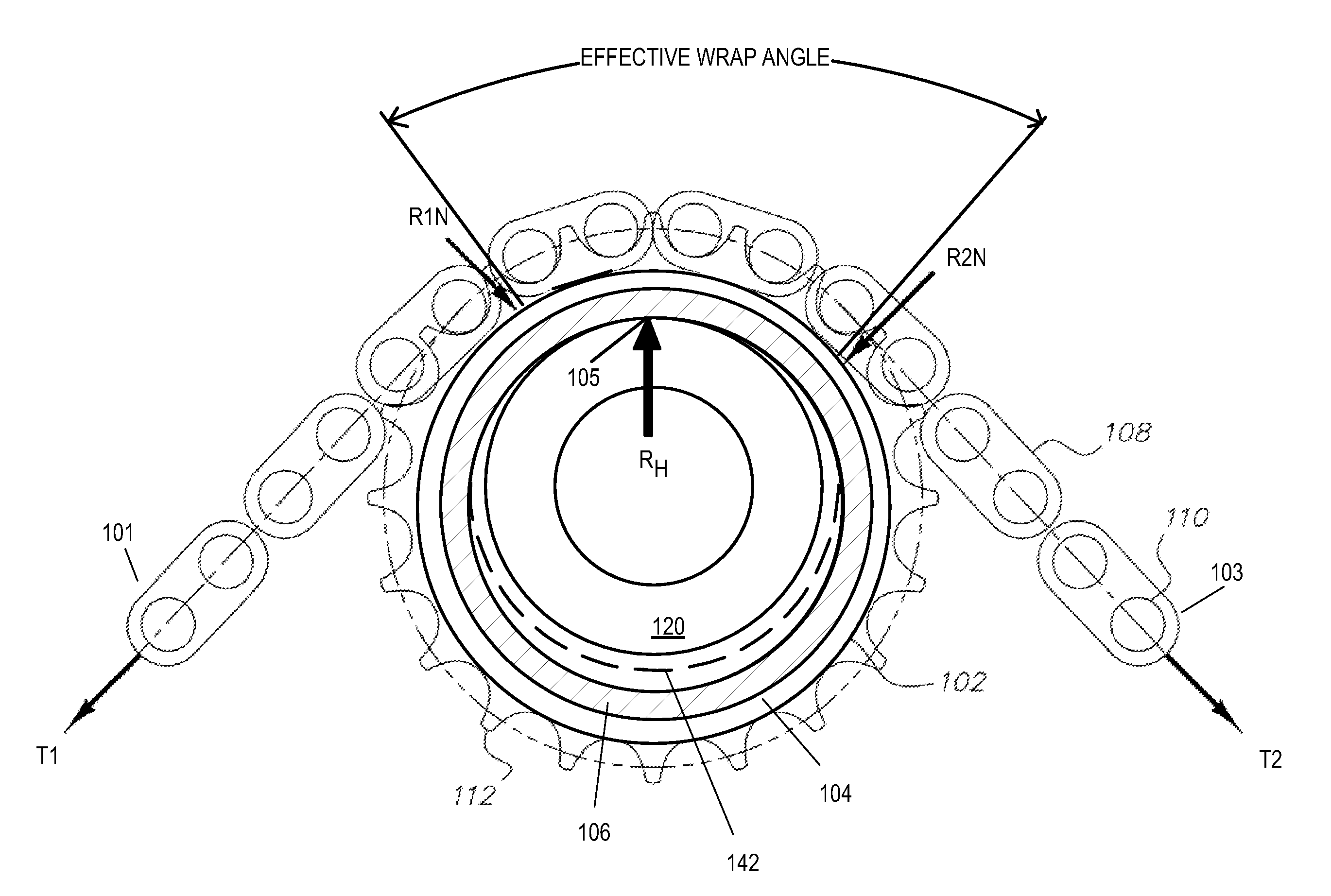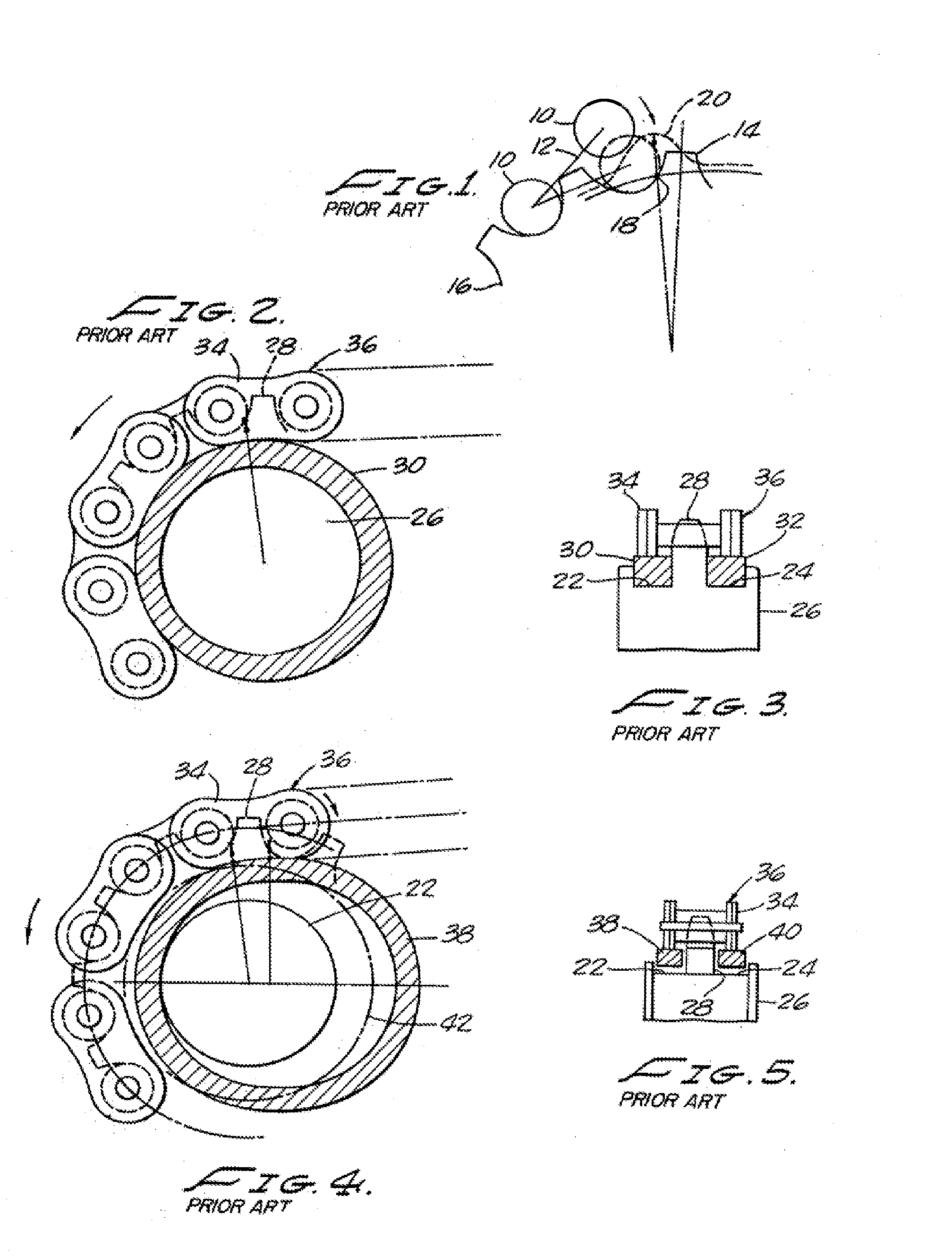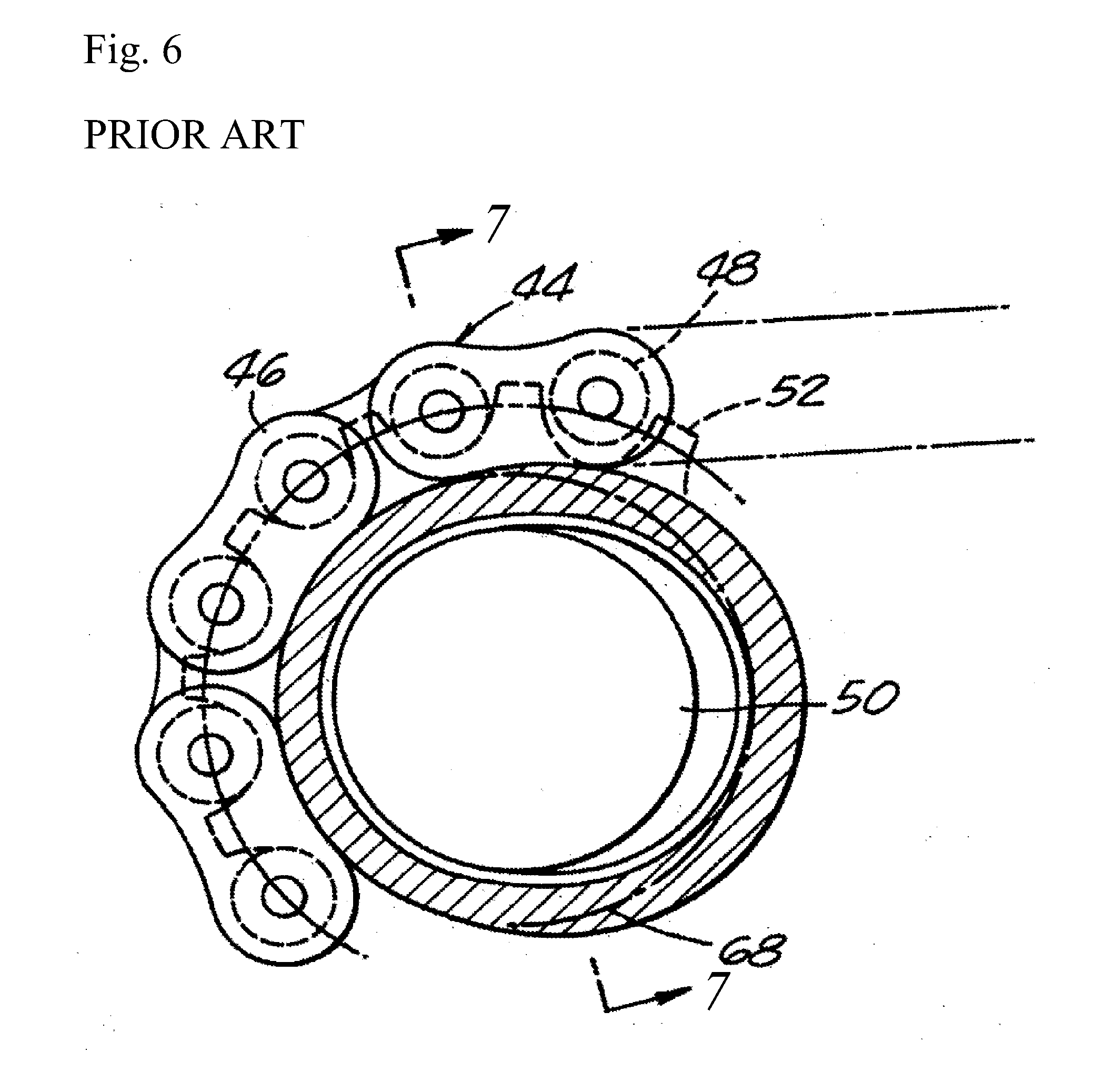Chain noise reduction device
a noise reduction device and chain technology, applied in the direction of belts/chains/gearings, gearing elements, hoisting equipment, etc., can solve the problems of chain rollers or links contacting the sprocket, excessive noise and excessive wear, and rapid wear, so as to reduce the level of chain engagement noise, reduce wear, and increase the life of resilient materials
- Summary
- Abstract
- Description
- Claims
- Application Information
AI Technical Summary
Benefits of technology
Problems solved by technology
Method used
Image
Examples
first embodiment
[0039]FIGS. 11 and 13 show another schematic of a cushion ring of the first embodiment with a sprocket. The sprocket comprises a hub 120, an annular portion with radial flanges 114 and a continuous circumferential row of spaced apart radially projecting teeth 112. The annular portion is fastened or welded onto the hub 120 and the radial flanges 114 define circular outer diameters or concentric grooves 118 that are larger than the cushion ring inner diameter, trapping the cushion ring 102 loosely within the concentric groove 118. The grooves 118 are positioned coaxially with the sprocket 112 and are adjacent to the sprocket teeth 112a. A small space 107 (see FIG. 10) is present between the groove 118 and the resilient inner ring 106 of the cushion ring 102 to allow the resilient component of the inner ring 106 to displace as necessary. The links 108 of chain run along the outer surface or load bearing portion 104a of the outer ring 104.
second embodiment
[0040]FIGS. 14 and 15 show a cushion ring of a second embodiment with a sprocket. The cushion ring 202 is comprised of an outer ring 204 made of spring-like steel that is not compressible and an inner ring 206 made of a resilient material such as rubber or plastic. In this embodiment, the outer ring 204 and the inner ring 206 are not bonded together and are independent of each other or separate. The inner ring 206 has a smaller diameter than the outer ring 204 and a space 207 is present between the inner ring 206 and the outer ring 204. The inner ring 206 is preferably an O-ring. The sprocket comprises a hub 120, an annular portion with radial flanges 114 and a continuous circumferential row of spaced apart radially projecting teeth 112a. The annular portion is fastened or welded onto the hub 120 and the radial flanges 114 define circular outer diameters or concentric grooves 218 that are larger than the cushion ring inner diameter, trapping the cushion ring 202 loosely within the c...
PUM
 Login to View More
Login to View More Abstract
Description
Claims
Application Information
 Login to View More
Login to View More - R&D
- Intellectual Property
- Life Sciences
- Materials
- Tech Scout
- Unparalleled Data Quality
- Higher Quality Content
- 60% Fewer Hallucinations
Browse by: Latest US Patents, China's latest patents, Technical Efficacy Thesaurus, Application Domain, Technology Topic, Popular Technical Reports.
© 2025 PatSnap. All rights reserved.Legal|Privacy policy|Modern Slavery Act Transparency Statement|Sitemap|About US| Contact US: help@patsnap.com



